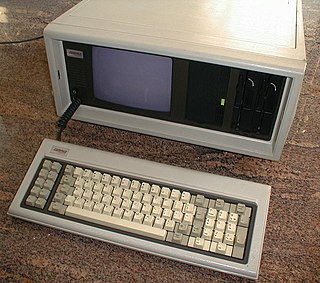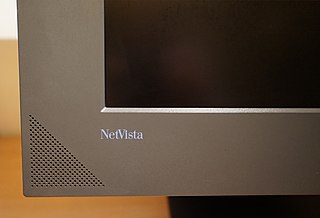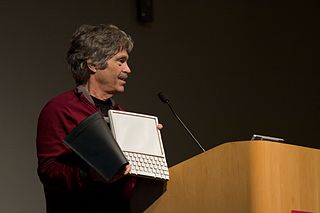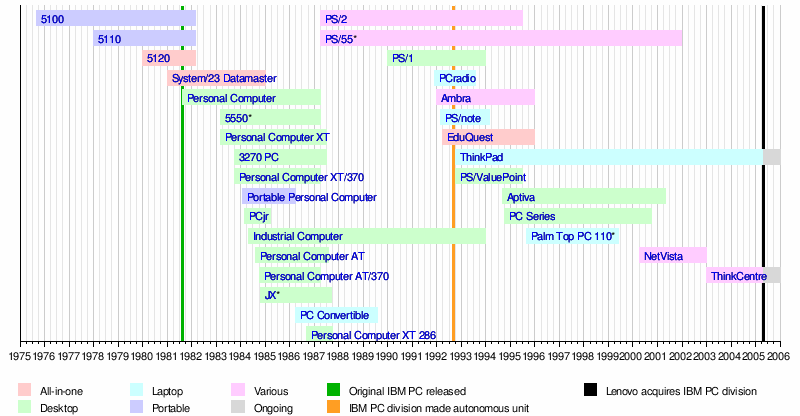
An IBM PC compatible is any personal computer that is hardware- and software-compatible with the IBM Personal Computer and its subsequent models. Like the original IBM PC, an IBM PC–compatible computer uses an x86-based central processing unit, sourced either from Intel or a second source like AMD, Cyrix or other vendors such as Texas Instruments, Fujitsu, OKI, Mitsubishi or NEC and is capable of using interchangeable commodity hardware such as expansion cards. Initially such computers were referred to as PC clones, IBM clones or IBM PC clones, but the term "IBM PC compatible" is now a historical description only, as the vast majority of microcomputers produced since the 1990s are IBM compatible. IBM itself no longer sells personal computers, having sold its division to Lenovo in 2005. "Wintel" is a similar description that is more commonly used for modern computers.

Wintel is the partnership of Microsoft Windows and Intel producing personal computers (PCs) using Intel x86-compatible processors running Microsoft Windows.

In computer architecture, 64-bit integers, memory addresses, or other data units are those that are 64 bits wide. Also, 64-bit central processing units (CPU) and arithmetic logic units (ALU) are those that are based on processor registers, address buses, or data buses of that size. A computer that uses such a processor is a 64-bit computer.

ThinkPad is an American line of business-oriented laptop and tablet computers produced since 1992. The early models were designed, developed and marketed by International Business Machines (IBM) until it sold its PC business to Lenovo in 2005; since 2007, all new ThinkPad models have been branded Lenovo instead and the Chinese manufacturer has continued to develop and sell ThinkPads to the present day.
The Advanced Computing Environment (ACE) was defined by an industry consortium in the early 1990s to be the next generation commodity computing platform, the successor to personal computers based on Intel's 32-bit instruction set architecture. The effort found little support in the market and dissolved due to infighting within the group and a lack of sales.

ThinkCentre is a brand for a family of business-oriented desktop computers, the early models of which were designed, developed and marketed by International Business Machines (IBM) since 2003. In 2005, IBM sold its PC business, including the ThinkCentre brand, to Lenovo. ThinkCentre computers typically include mid-range to high-end processors, options for discrete graphics cards, and multi-monitor support.
HP Pavilion is a line of consumer-oriented personal computers originally produced by Hewlett-Packard and later by its successor, HP Inc. Introduced in 1995, HP has used the name for both desktops and laptops for home and home office use.

The Compaq Deskpro is a line of business-oriented desktop computers manufactured by Compaq, then replaced by the Evo brand in 2001. Models were produced containing microprocessors from the 8086 up to the x86-based Intel Pentium 4. The Deskpro name, in an inverted fashion as "ProDesk", is still in use by HP, which Compaq merged with in 2002.

Subnotebook, also called ultraportable, superportable, handtop, mini notebook or mini laptop, is a type of laptop computer that is smaller and lighter than a typical notebook-sized laptop.

Presario is a discontinued line of consumer desktop computers and laptops originally produced by Compaq and later by Hewlett-Packard. Introduced in 1993, Compaq has used the Presario brand for its home and home office product offerings.

Mwave was a technology developed by IBM allowing for the combination of telephony and sound card features on a single adapter card. The technology centers around the Mwave digital signal processor (DSP). The technology was used for a time to provide a combination modem and sound card for IBM's Aptiva line and some ThinkPad laptops, in addition to uses on specialized Mwave cards that handled voice recognition or ISDN networking connectivity. Similar adapter cards by third-party vendors using Mwave technology were also sold. However, plagued by consumer complaints about buggy Mwave software and hardware, IBM eventually turned to other audio and telephony solutions for its consumer products.

The Compaq Presario 1200 was a line of notebook computers produced between 1998 and 2000 by Compaq as part of Compaq Presario line.

The Personal Computer Series, or PC Series, was IBM's follow-up to the Personal System/2 and PS/ValuePoint. Announced in October 1994 and withdrawn in October 2000, it was replaced by the IBM NetVista, apart from the Pentium Pro-based PC360 and PC365, which were replaced by the IBM IntelliStation.

NetVista is an umbrella name for a variety of products manufactured by IBM.

The history of laptops describes the efforts, begun in the 1970s, to build small, portable personal computers that combine the components, inputs, outputs and capabilities of a desktop computer in a small chassis.

IBM ThinkPad 760 was a notebook computer introduced in 1995 by the IBM corporation into the market as part of the ThinkPad 700-series. It was succeeded in 1998 by the ThinkPad 770 series.

The PS/1 is a brand for a line of personal computers that marked IBM's return to the home market in 1990, five years after the IBM PCjr. It was replaced by the IBM Aptiva in September 1994.

The IBM ThinkPad 600 series was a series of notebook computers introduced in 1998 by IBM as an lighter and slimmer alternative to the 770 series. Three models were produced, the 600, 600E, and 600X; the series was succeeded in 2000 by the ThinkPad T20 series.

The IBM ThinkPad T20 series was a series of notebook computers introduced in May 2000 by IBM as the successor of the 770 series and the first model of the T-series which exists today under Lenovo ownership. Four models were produced, the T20, T21, T22, and T23; the series was succeeded in May 2002 by the ThinkPad T30, but was produced until July 2003.

86Box is an IBM PC emulator for Windows, Linux and Mac based on PCem that specializes in running old operating systems and software that are designed for IBM PC compatibles. Originally forked from PCem, it later added support for other IBM PC compatible computers as well.





















